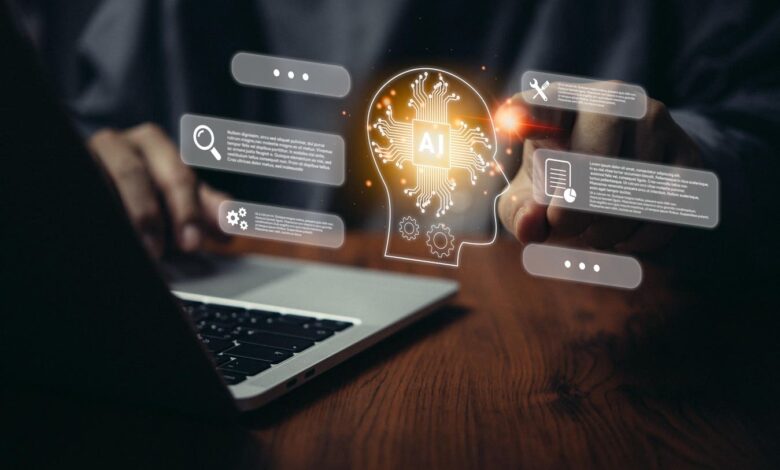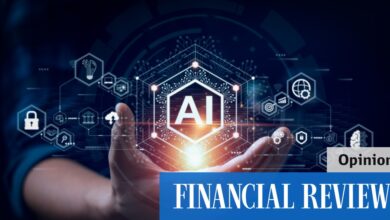The Gendered Impacts Of AI On Women’s Careers

artificial chat Chat with AI or Artificial Intelligence. Digital chatbot, robot application, OpenAI … [+]
In the evolving landscape of artificial intelligence (AI), one question increasingly stands out: is there a connection between the fact that AI is predominantly trained by men, and the fact that AI’s potential to disrupt jobs predominantly impacts women? This was one of many questions considered by Mercer as its future of work practice pondered if women are right to be wary of AI.
Mercer’s 2024 Global Talent Trends Study predicts that because women hold more of the jobs expected to be disrupted by AI, they will likely be more adversely impacted. For example, the administration, healthcare, education, and social services industries all have high proportions of women and are among the sectors most likely to experience widespread job losses due to AI and automation.
Kate Bravery, Mercer Global Advisory Solutions & Insights Leader, says that while it is true that women are currently experiencing more disruption due to AI, she questions if that disruption is linked to the fact that more men are involved in training AI models. “Women definitely occupy more jobs that the first wave of generative AI is impacting, but because of the gender imbalance, as generative AI penetrates further up the hierarchy, we’ll start to see some of that change.”
Who is using AI at work?
A survey by Mercer’s sister company Oliver Wyman also reveals a gender disparity in the adoption of generative AI. About 59% of men aged 18-65 use AI tools weekly, while only 51% of women said they’re currently using it. “What’s most fascinating is that this gap is particularly pronounced in the younger cohort,” says Bravery. With younger workers, 71% of men aged 18-24 utilize AI weekly, while only 59% of women aged 18-24 do the same.
“Normally when there’s new tech, you find that it’s the younger generation who are more exposed to it, more aware of it, and understand the implications of it,” says Bravery. “Generative AI has been different. It’s actually a flip. And I think that’s because executives have gotten so excited about the potential productivity gains from AI usage. In the trends I track, I’ve found that the executives are more informed about the opportunities and what AI can do than the junior generations.”
Bravery shared a statistic from an upcoming survey (Mercer has yet to publish the findings) that also sheds light on generative AI adoption — and it’s all about the messenger. “When business executives talk about using AI, it’s 50% more likely that people in their organization also are. But when it’s the chief human resource officer talking about using it as the future way of working, it’s 70% more likely. That’s why I think that the person who leads the people function is best placed to be championing that.”
What other gendered biases can AI introduce?
“One bias we’ve seen in our previous global talent trend survey has been that men are more likely to feel they are suitable for a job they’ve never done before,” says Bravery. A humorous example of this overconfidence is the fact that nearly 50% of men think they could safely land a passenger plane in the event of an emergency. “When we look at trends in 360 feedback in organizations, we do find that men tend to rate themselves higher on self-ratings when compared to women,” says Radhika Punshi, who is an organizational psychologist and co-founder and managing director at Mercer Talent Enterprise.
Why does this difference in self-rating matter? “A lot of AI is coming into talent intelligence platforms and talent marketplaces. It’s great for the manager to have a tool to help them screen and deploy new talent, but if you’re relying on the human to put down what skills they have and women are much more likely to hold back in saying what skills they have, then that’s one more bias we have to be cognizant of,” adds Bravery.
Mitigating bias is also about ensuring smart and balanced inputs into AI models. “It’s about what you feed into the model, and it sometimes codifies what humans have been doing for the last 15 or 20 years,” says Punshi. Punshi stresses the point that if you feed bad data into the model, you’ll get poor outcomes, and these biased data sets can perpetuate existing inequalities rather than rectify them.
“One of the things I find that makes a huge difference when you’re looking at gender differences is looking at the internal labor flow you have in your business by gender. How many women are you hiring at each level? How many are exiting? How many are progressing? That level of transparency is often eye-watering, ” says Bravery. “That will tell you if you’ve got stagnancy or whether women are not getting the same opportunities.”
Punshi looks at minimizing bias and adverse outcomes for women through another lens. “It’s three dimensions. First, access — access to rewards, benefits, and pay. Then there is representation; making sure you have women across all levels of the organizations. And then there’s opportunity. Are women getting those mobility opportunities? Are they getting training opportunities?”
AI and the new productivity equation
Executives are excited about the productivity gains generative AI can bring — but if the focus is only on productivity through the lens of today’s current ways of working, then leaders are missing the bigger point and opportunity.
“This is our opportunity to use AI to redesign work for wellbeing,” says Bravery. She goes on to explain how health and well-being issues absolutely sap productivity. “If you have a depleted workforce and a workforce that is covering for others who have left, or you haven’t re-designed work after you’ve done a reduction in force — that’s what’s sapping our productivity.”
“We now have AI-driven work design tools that can allow us to deconstruct how jobs are being done today, and then reconstruct them given the opportunities of AI and humans so that you allocate the task to the best person. But this is also a chance to solve some of the problems of our time — and that is to make the job more interesting and more attractive. Make the job smaller so more people can do it. Ensure the job has elements of the next job so that people are learning the skills of future jobs. And let’s make sure the job is a job an actual human can do, as opposed to being a superhero. I see too many women who are superheroes. Just because you can do it, doesn’t mean it should be a long-term solution,” says Bravery.
As AI continues to reshape the workforce, businesses must navigate the gendered impacts of this transformation — and keep their eye on the other opportunities beyond productivity that AI brings. By addressing biases, promoting digital skills among women, and redesigning work to enhance well-being, organizations can harness AI’s potential while fostering an inclusive and equitable workplace. The journey towards a digitally empowered future requires concerted efforts to ensure that AI benefits all employees, regardless of gender.



